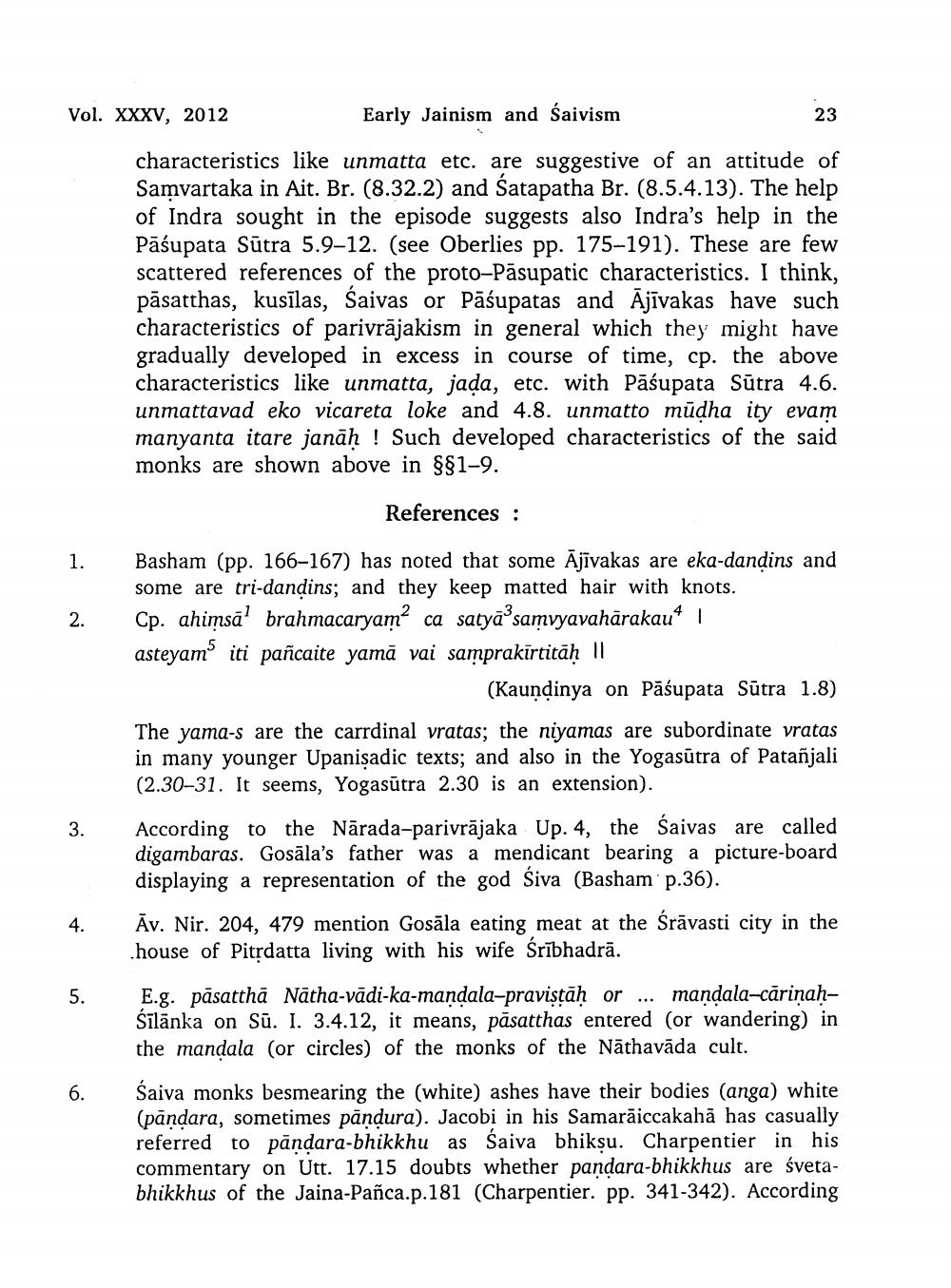________________
Vol. XXXV, 2012
Early Jainism and Saivism
characteristics like unmatta etc. are suggestive of an attitude of Samvartaka in Ait. Br. (8.32.2) and Śatapatha Br. (8.5.4.13). The help of Indra sought in the episode suggests also Indra's help in the Pasupata Sūtra 5.9-12. (see Oberlies pp. 175-191). These are few scattered references of the proto-Pasupatic characteristics. I think, pāsatthas, kusīlas, Śaivas or Pasupatas and Ājīvakas have such characteristics of parivrājakism in general which they might have gradually developed in excess in course of time, cp. the above characteristics like unmatta, jaḍa, etc. with Pasupata Sūtra 4.6. unmattavad eko vicareta loke and 4.8. unmatto mūḍha ity evam manyanta itare janāḥ! Such developed characteristics of the said monks are shown above in §§1-9.
References :
Basham (pp. 166-167) has noted that some Ājīvakas are eka-danḍins and some are tri-dandins; and they keep matted hair with knots. Cp. ahimsa1 brahmacaryam ca satya3samvyavahārakau | asteyam iti pañcaite yamā vai samprakīrtitāḥ ||
(Kaunḍinya on Pasupata Sūtra 1.8)
1.
2.
3.
4.
5.
6.
23
The yama-s are the carrdinal vratas; the niyamas are subordinate vratas in many younger Upanisadic texts; and also in the Yogasūtra of Patanjali (2.30-31. It seems, Yogasūtra 2.30 is an extension).
According to the Narada-parivrājaka Up. 4, the Saivas are called digambaras. Gosala's father was a mendicant bearing a picture-board displaying a representation of the god Śiva (Basham p.36).
Av. Nir. 204, 479 mention Gosāla eating meat at the Śravasti city in the house of Pitṛdatta living with his wife Śrībhadrā.
mandala-carinah
E.g. păsatthā Nātha-vādi-ka-maṇḍala-pravistāḥ or Śīlānka on Sū. I. 3.4.12, it means, păsatthas entered (or wandering) in the mandala (or circles) of the monks of the Nathavada cult.
Śaiva monks besmearing the (white) ashes have their bodies (anga) white (pāṇḍara, sometimes pāṇḍura). Jacobi in his Samaraiccakahā has casually referred to pāṇḍara-bhikkhu as Saiva bhikṣu. Charpentier in his commentary on Utt. 17.15 doubts whether pandara-bhikkhus are śvetabhikkhus of the Jaina-Pañca.p.181 (Charpentier. pp. 341-342). According




